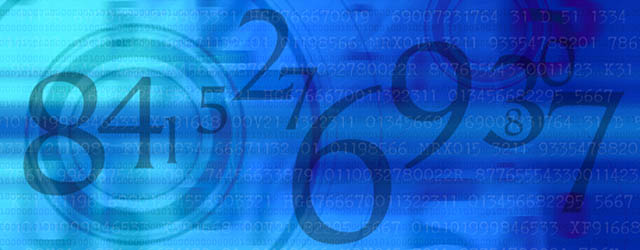Freed from bitcoin, could the blockchain, or blockchain lite, become the underlying infrastructure behind better banking?

Table Of Contents
“I absolutely detest the word disrupt—it is a fundamentally negative word which has become trendy with technology start-ups, but if you look at some of the big boys, such as Google, Apple, eBay and Amazon, you never see that word mentioned next to their name,” opines Nasir Zubairi, who has worked for fifteen years in the financial services sector and whose CV includes FinLeap, Level39, Currency Cloud and RBS.
Hardly a day goes by without news of how cryptocurrency technology will disrupt banking as both Bitcoin start-ups and banks themselves look into the potential of an almost costless means of making payments around the globe. “The banks have figured out that there is a lot of value in the blockchain,” says Zubairi, “and I think this is about the methodology: the distributed confirmation and security of the blockchain and its applicability in the settlement of transactions within capital markets. And that can be done without bitcoin.”
Blockchain refers to the public ledger of transactions for digital currency, which is verified and updated by computers solving complex algorithms. But it is this method of communication and confirmation that holds real potential for banks, rather than the adoption of a cryptocurrency.
“Technologies like bitcoin were built to offer an alternative solution—a single, global digital currency for the whole world to adopt,” explains Ripple Labs CEO and co-founder Chris Larsen. “The true innovation behind bitcoin was creating a system to move money between networks without a central operator. However, bitcoin has two key limitations as a new financial system: It either requires the whole world to adopt bitcoin as a global currency, or it requires users to trade in and out of fiat currencies—resulting in the same currency risk that exists today. So while bitcoin carved out an early path to interoperability, it remains more suited for consumers and merchants than financial institutions.”
Sticking with the rail analogy, Zubairi views bitcoin as a train that sits upon the track—which is the blockchain: “but the track can add value in itself as a mechanism for transportation.”
SEAMLESS INTEROPERABILITY

Ripple Labs’ namesake solution is based on blockchain technology and is designed to modernize existing payments infrastructure by enabling interoperability between banks and payment networks on a global scale.
The Ripple network is a shared public ledger—basically a database—administered collectively by a network of servers. This ledger tracks the accounts and balances of Ripple users. Within the Ripple network, all transactions are authorized and settled through a process called consensus. This process entails a supermajority of Ripple servers mutually agreeing that a transaction within the network is valid before updating the ledger.
Ripple servers use public/private key cryptography to verify whether transactions are valid or not. Each transaction that gets submitted has its own unique digital signature, and Ripple servers mathematically verify that the correct signature appears—the signature of the owner of the funds—before including transactions in a new ledger.
With Ripple, the challenge of moving money across country networks is eliminated. “The Internet is well suited to moving information, allowing users to send communications or data anywhere in the world instantly and for free. The movement of money requires a central operator for settlement—typically central banks or clearing houses—to prevent double-spend and other problems. The world’s payment systems were built country-by-country, and they still lack interoperability.”
Each of these individual clearing and settlement systems is very efficient at moving money within its own network, but it’s still inefficient to transfer money between systems, Larsen notes. “Whenever money has to leave one company or country network and travel to another, it introduces time and money friction that translates into delays and expense. These additional fees, time delays and risk occur because there is still no global rail for cross-border payments.”
Ripple is a distributed payments technology that uses consensus to complete secure, real-time transactions in any currency. The Ripple protocol provides the backbone and market makers on Ripple’s distributed exchange facilitate the transaction. Users settle via “gateways,” which are the bank or FI that provided the currency for the transaction.
“Using Ripple for direct, point-to-point transactions with no reserve funding, these [banks and payments providers] can expand both the volume and reach of their business, saving time and money while remaining fully compliant with existing banking regulations,” states Larsen.
Larsen insists that Ripple is an enabling technology that complements SWIFT and ACH. “Ripple is the payments rail connecting networks for real-time settlement in any currency; it does not replace existing messaging systems or payment networks. Ripple can easily be used alongside SWIFT’s global messaging services or in combination with ACH’s same-day payments to enable faster, cheaper and fully compliant transactions across borders and currency.”
There is a global march toward real-time payments under way, and growing awareness that blockchain technologies can help accelerate this movement. “Banks and other financial institutions are supporters of this broader effort,” continues Larsen. Last May, Germany’s Fidor became the first bank to integrate Ripple’s protocol into its payments infrastructure, with two US banks, CBW Bank and Cross River Bank, following suit months later. Three of Australia’s largest banks—the Commonwealth Bank of Australia, Westpac Banking Corporation and the Australia and New Zealand Banking Group—have all began piloting Ripple, and Western Union will soon follow.
INCLUSIVE BANKING

Although technologies like the blockchain have the potential to transform financial infrastructure, this ability to transact in real time, in any currency, anywhere in the world can lead to a truly global and more inclusive economy. In the short term, it means dramatically faster and cheaper ways of doing business for banks and corporations, with the possibility of expanding their business and growing new lines of revenue. In the long term, real-time payments can vastly increase transaction volume. And for end consumers, while the points of interaction might remain the same, the use of these new infrastructure technologies by their financial providers will lead to significantly better, faster and cheaper services.
Ecuador is leading the way in making use of such technologies as a means to better serve its poorest citizens. It recently became the first country to adopt its own digital currency, and local banks have been ordered to adopt a home-grown digital dollar, called the Electronic Money System, in an effort to serve the country’s unbanked citizens, who will be able to receive and send payments with their mobile phones. EMS is similar to M-Pesa and other nontraditional digital payment services widely adopted in African nations.
For the global banking industry, blockchain adds an additional layer of security with relative simplicity and low cost, so it has potential value for any transaction that involves a confirmation layer within capital markets as a whole—across different asset classes. “No wonder the banks are interested in it,” concludes Zubairi.



